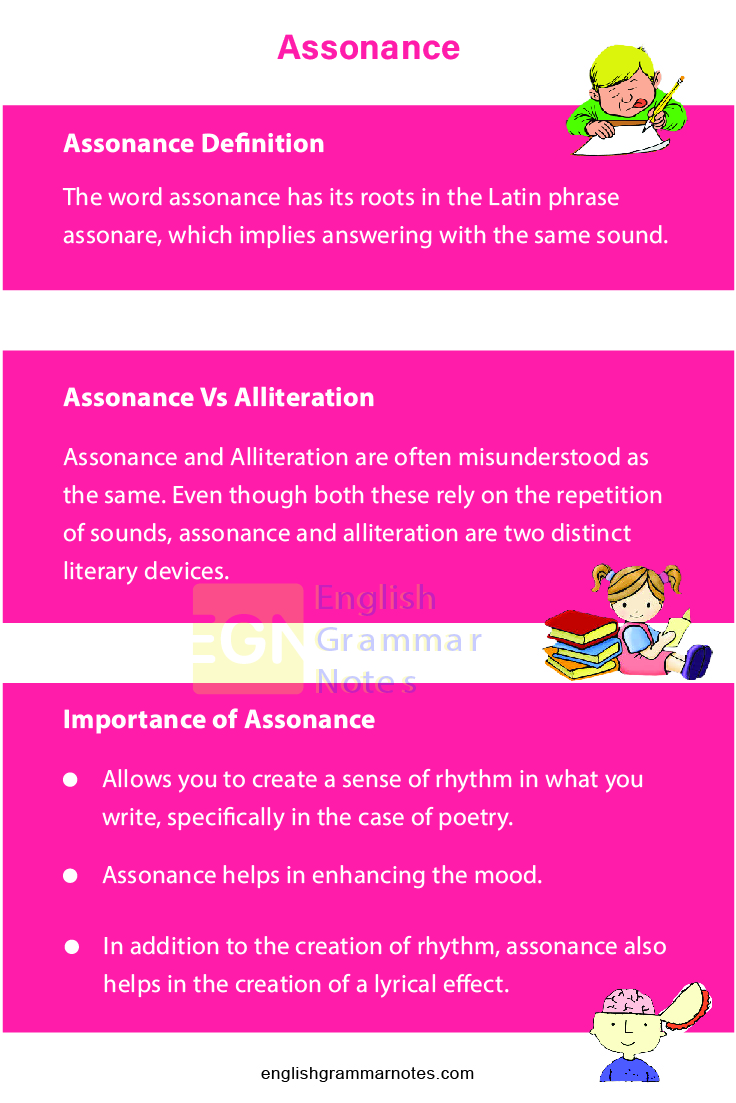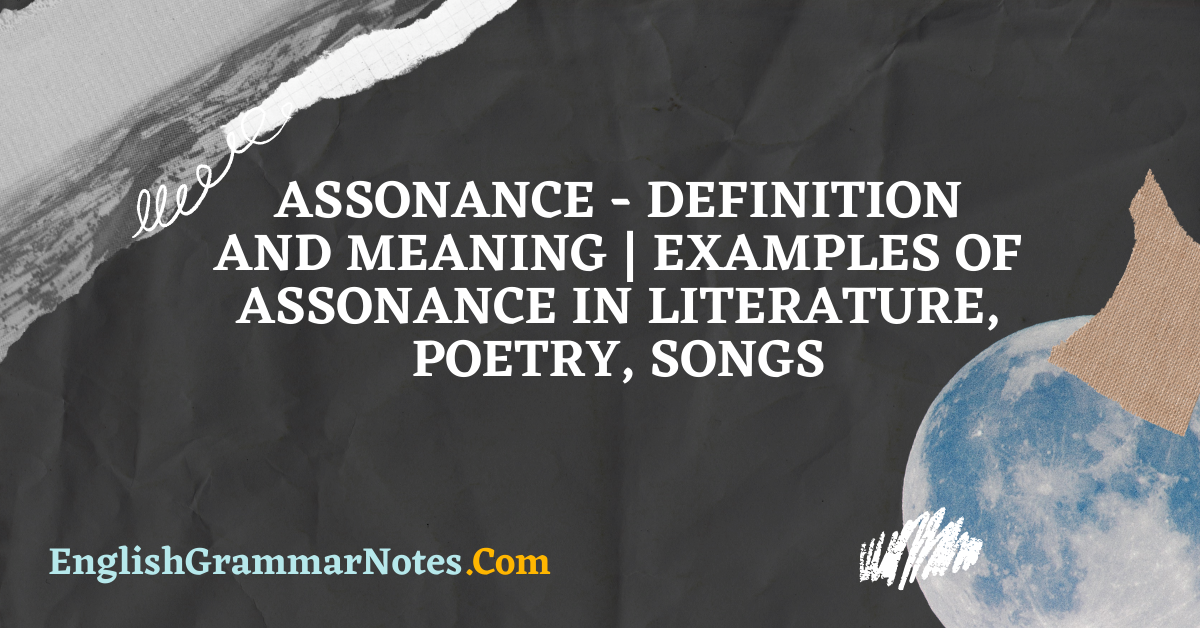Assonance is a literary device that engages in the repetition of vowel sounds within words, phrases, or sentences. If you find the same vowel repeated in close proximity, you have found assonance. For example, take this line from the movie My Fair Lady. “The rain in Spain stays mainly in the plain”. In the above line the vowel ‘a’ is repeated multiple times.
- Assonance Definition and Examples
- Assonance in Songs
- Assonance in Literature Examples
- Assonance Vs Alliteration
- Assonance Vs Consonance
- Importance of Assonance
- What is Assonance?
- What are the benefits of using assonance?
- Distinguish between assonance and consonance?
- Give examples of sentences that make use of assonance?
Assonance Definition and Examples
The word assonance has its roots in the Latin phrase assonare, which implies answering with the same sound. Even though there are no synonyms for assonance, the closest resembling words include: chant, chime, refrain, lyric, music, aria, and theme.
Assonance Examples
Many common words and phrases use assonance. Hence assonance is used in everyday interactions to enhance the mood. Some of the common examples of assonance include:
- Stranger danger
- Winner, winner, chicken dinner
- Motion of the ocean
- Dumb luck
- Noise if Boys
- After awhile, crocodile
- Chips and dip
- No pain no gain
- Cock of the walk
Assonance in Songs
Assonance is of great help when it comes to creating mood and rhythm in songs. Given below are some examples for the use of assonance in songs:
“Light My Fire” (The Doors)
“Silent night, holy night, all is calm, all is bright” (“Silent Night” Joseph Mohr)
“The rain in Spain stays mainly in the plain” (musical “My Fair Lady”)
“Back in Black” (AC/DC)
“Oh, give me a home where the buffalo roam” (“Home on the Range” )
“Only the Lonely” (Roy Orbison)
Assonance in Literature Examples
The use of assonance is most clearly evident in poetry. It is a great device that heightens rhythm and mood. Given below is one such example:
May-Flower by Emily Dickinson
Pink, small, and punctual,
Aromatic, low,
Covert in April,
Candid in May,
Dear to the moss,
Known by the knoll,
Next to the robin
In every human soul.
Bold little beauty,
Bedecked with thee,
Nature forswears
Antiquity.
Also, Read:
Assonance Vs Alliteration
Assonance and Alliteration are often misunderstood as the same. Even though both these rely on the repetition of sounds, assonance and alliteration are two distinct literary devices. Assonance specifically refers to the repetition of vowel sounds, whereas alliteration is the repetition of the same letter or sound at the beginning of words.
Assonance Vs Consonance
Assonance and Consonance are both handy literary devices. While assonance refers to the repetition of vowel sounds, consonance corresponds to the repetition of consonant sounds. Hence they are different as one consists of stressed syllables and the other consists of unstressed syllables.
Secondly, consonance can be employed in both prose and poetry, while assonance is used in the latter.
Importance of Assonance
Here are some of the benefits of using assonance:
- Allows you to create a sense of rhythm in what you write, specifically in the case of poetry.
- Assonance helps in enhancing the mood.
- In addition to the creation of rhythm, assonance also helps in the creation of a lyrical effect.

FAQs on Assonance
Assonance is a literary device that engages in the repetition of vowel sounds within words, phrases, or sentences. If you find the same vowel repeated in close proximity, you have found assonance.
2. What are the benefits of using assonance?
The use of assonance helps you to create a sense of rhythm in what you write, specifically in the case of poetry.
It also helps in enhancing the mood. In addition to the creation of rhythm, assonance also helps in the creation of a lyrical effect.
3. Distinguish between assonance and consonance?
Assonance refers to the repetition of vowel sounds, consonance corresponds to the repetition of consonant sounds. Consonance can be employed in both prose and poetry, while assonance is used in the latter.
4. Give examples of sentences that make use of assonance?
Examples of sentences that make use of assonance include:
- Motion of the ocean
- Dumb luck
- After a while, crocodile
Conclusion
Assonance is a useful literary device that you can make use of. With the help of assonance, you can add rhythm and sound to the text. This in turn enhances the meaning or mood of the text. However be careful, the overuse of assonance can curtail the feel of what you write.
